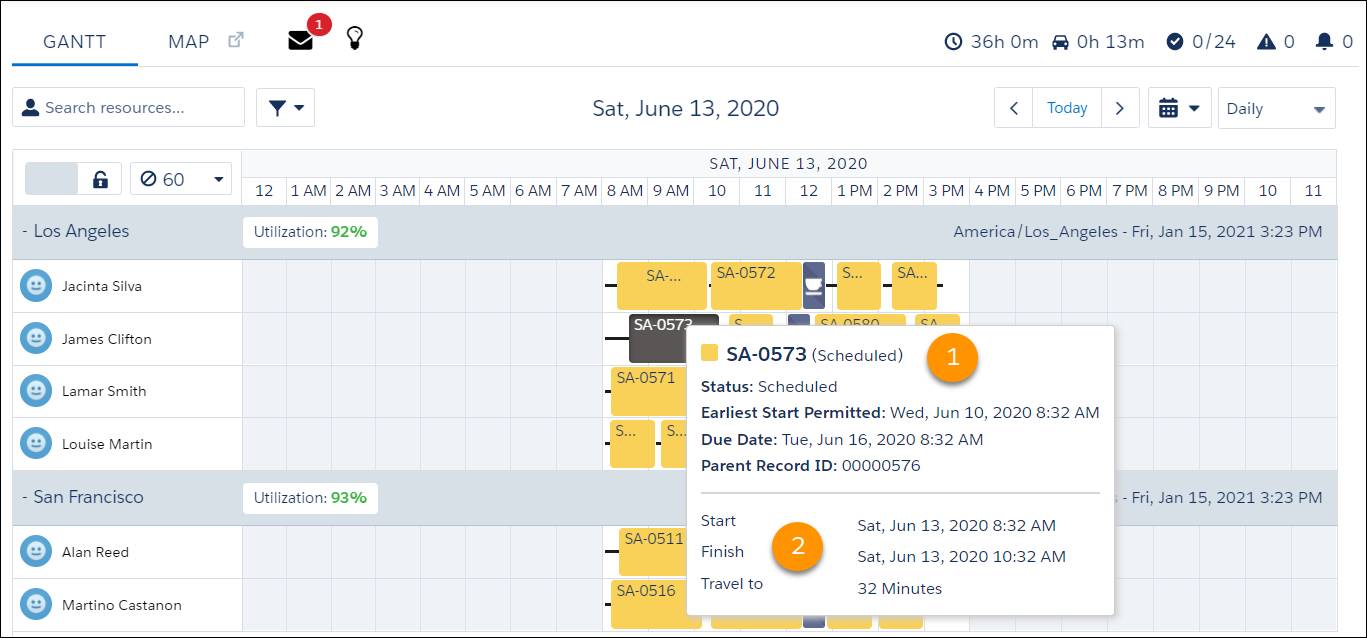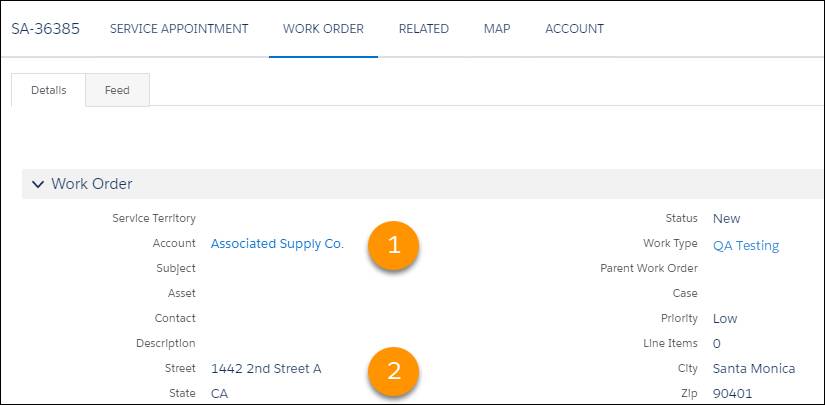Explore Scheduling
Learning Objectives
After completing this unit, you’ll be able to:
- Describe the parts of a schedule.
- Explain how you can incorporate business priorities into scheduling.
- Discuss factors to balance when making a schedule.
What Does the Schedule Show You?
Maria Jimenez is the admin at Ursa Major Solar, a solar energy company based in the southwestern United States. Ursa Major sells, installs, and maintains solar energy products, from single solar panels to giant commercial solar installations. It recently supercharged its field service team by installing Field Service and the managed package.
Field Service connects your workforce, products, and customers on one platform to deliver exceptional on-site service. The managed package powers up your field service team with more great features. The dispatcher console lets dispatchers see appointment lists, scheduling actions, a mobile worker availability chart, and an interactive map in one place. A guided setup tool helps admins integrate and maintain scheduling policies, global actions, sharing tools, and optimization rules.
Maria’s team uses the dispatcher console to track jobs in a Gantt schedule. The dispatcher console answers who, what, when, and where questions about each appointment. Maria hovers over one of James Clifton's appointment on the Gantt to see:
- What is the status of the service appointment? (1) Scheduled
- When is James working? (2) On June 13, 2020, from 8:32 AM to 10:32 AM

Maria double-clicks the appointment, then clicks the Work Order tab to answer her who and where questions.
- Who is the client? (1) Associated Supply Company
- Where will the work be completed? (2) 1442 2nd St A, Santa Monica, CA, 90401

Why Is This Appointment in This Slot?
Maria answered the who, what, when, and where questions for her appointment, but now she’s curious about why.
- Why did this particular appointment end up where it is on the schedule?
- Why did the scheduler choose this mobile worker instead of someone else?
- Why did it choose this particular time?
Let’s get some answers. First, there’s a job that must be completed—in this case, an installation. Earlier, Maria and her team created a list of candidates who are qualified to perform different services (the who). The scheduler uses that information to see who is available to perform the installation service between the earliest permitted start date and the due date for the job (the when). Combining the who and when creates a pool of candidates who are both qualified to do the job and available at the right time. If there’s only one qualified and available mobile worker who can work in the required time, we’re done. But usually more than one candidate appears. Then the scheduler chooses the best time slot and best mobile worker using the company’s business priorities.
This is an important point. We built Field Service so you can optimize scheduling based on your business priorities, the things that keep your business strong. You optimize your scheduling via work rules, service objectives, and scheduling policies, which we walk through in the next units.
First, let’s look at the business priorities that Ursa Major considers when making its schedules.
- Great customer service, particularly for VIP customers. Ursa Major likes same-day service, a high first-time fix rate, and for mobile workers to arrive during the arrival window.
- Manageable costs. Jumping right into action costs money. Ursa Major must keep an eye on travel times and overtime costs, and make sure the most cost-effective mobile worker is performing each job.
- Happy employees. Employees are key to Ursa Major’s success. It works to retain them by ensuring efficient routing to jobs, keeping paperwork to a minimum, and making sure everyone works reasonable hours.
- Long-term business growth. The business must have a reasonable profit per job and cover all service appointments even as the business grows.
Ursa Major tracks how it’s meeting its business priorities using key performance indicators, like travel times. Qualifications, time constraints, and business priorities are all important factors when choosing the best mobile worker to perform a job. But because these factors often compete with one another, scheduling is a balancing act.
Here’s a list of questions and priorities Ursa Major balances when scheduling.
| Questions | Priorities | Factors to Balance |
|---|---|---|
| How much can Ursa Major spend on travel time? |
|
|
| How can Ursa get the right mobile worker for each job? |
|
|
| What skill level is needed for the job? |
|
|
| What happens when things change? |
|
|
It’s complicated balancing scheduling priorities like customer satisfaction, cost, and other factors. Luckily, Ursa Major uses Field Service, which has the best scheduling optimization engine out there. It's been developed and perfected over the past 20 years and is used by thousands of customers daily.
Maria knows how to use her schedule to answer important questions about her service appointments. She also understands the business priorities and factors Ursa Major balances as it makes a schedule. Take a moment to think about your own business priorities and how you can use them to create your own schedules.